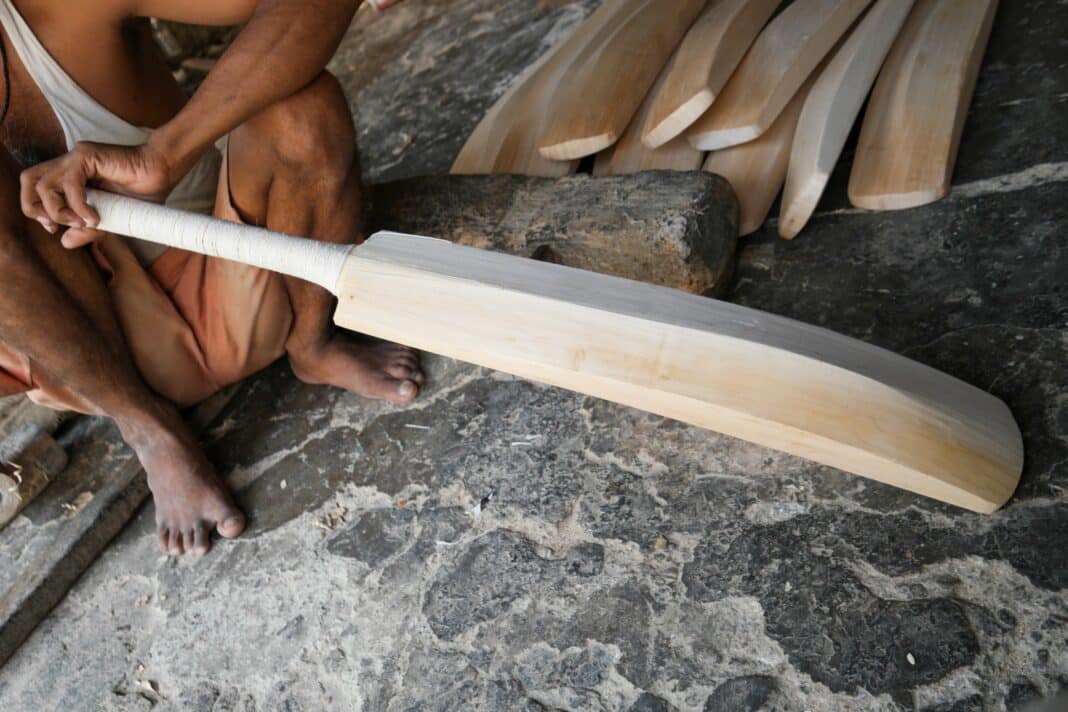With India and Australia preparing for the Cricket World Cup final – 20 years after last playing off in the final – manufacturers are inundated with a surge in demand for cricket bats.
In Kashmir, the engine room for the global production of cricket bats, demand has skyrocketed more than ten times since the start of last month, and if India wins on Sunday, it will surge further.
“We are anticipating a further surge in demand. Almost one lakh cricket bats are being exported to various states weekly to meet the demand,” according to Fawzul Kabir, a representative of the Kashmir Cricket Bat Manufacturers Association.
“It’s cricket fever everywhere, and we are boosting our production to cater to cricket lovers.”
Cricket bat manufacturing is a big business in the disputed region, employing 120,000 people who manufacture more than 1 million bats in a regular season.
About 400 cricket bat factories operate in Kashmir Valley, mainly in the Anantnag district of South Kashmir.
According to Mr Kabir, the demand for Kashmiri willow cricket bats is emerging in India, Pakistan, Bangladesh and Sri Lanka and in key export markets, including England, Australia and New Zealand.
“From Odisha to Tamil Nadu, Maharashtra and other states, cricket lovers prefer the Kashmiri cricket bat this season.”
That includes up to 17 professional crickets, who, for the first time in a Cricket World Cup, used Kashmir-willed cricket bats in the tournament.
Professional cricketers have traditionally favoured English willow over Kashmir willow, but the supply is crucial to meet the growing demand for the sport in South Asia.
According to Wood Central Contributor Greg Abel, English bats are traditionally 5-10 times more expensive than their Kashmir equivalents.
“Kashmir willow bat prices are 1/5th and 1/10th of their (English willow bat) prices,” Mr Kabir said.
“An English willow which costs around Indian Rupees 80,000 performs equivalent to a Kashmir willow bat costing between Indian Rupees 2,000 to Rs 5,000 only.”
However, despite the uptake in demand, bat producers have concerns that the “over-exploitation of trees in the Himalayan region” could lead to a global shortage of cricket bats over the next 3-5 years.
As reported by Wood Central in September, manufacturers are concerned about “unchecked logging” in the Indian-administered territory, which they claim has reduced healthy woodland to scrub.
“It’s a case of culling all the time and no sowing,” according to Irfan Ali Shah, a senior official in the territory’s forest service.
In addition, local farmers are turning to poplar trees, preferred by the booming plywood industry, fueling India’s surging building and construction industry.
Adding to the problem, there are concerns that clefts used in Kashmir willow are being smuggled out of the province and sold in international markets.
“Smuggling of our precious raw material has not stopped,” the official said, speaking on condition of anonymity due to the sensitive nature of the topic.







